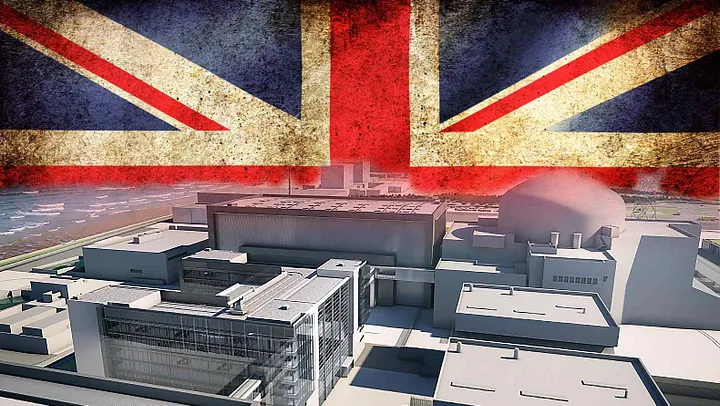- Posted on
- • Business
It’s time to take back control!
- Author
-
-

- User
- aydin
- Posts by this author
- Posts by this author
-

The constant refrain during the EU referendum was to “take back control”. In explaining their position, the Brexiteers would extol the virtues of controlling the UK’s borders, the UK’s rules and regulations, and above all sovereignty.
It is therefore more than timely that the significant decision to approve the Hinkley Point C nuclear power station comes just as the UK government is asked to show what Brexit means in practice. I say timely, as it is not entirely inappropriate to ask if control over elements of critical energy infrastructure should not be included in that basket.
Since the 1995 government report entitled “Review of the Future Prospects for Nuclear Power in the UK”, the ongoing privatisation programme across the energy sector resulted in divestments of the infrastructure itself, but more importantly, companies that has the expertise in design and manufacture of nuclear plants such as Westinghouse (a former US company bought by BNFL in 1999).
At the time, there appeared to be no appetite for increasing the UK’s nuclear energy contribution beyond the current 18%. With the urgent drive towards a low carbon future, and the need for reliable base load alongside the welcomed growth in renewables, that appetite has swung the other way. In thinking of this, one needs also to consider the issue of “energy security” — both in reliability of the infrastructure but also the commercial and geopolitical security supporting that very base load the UK will rely upon in the coming century.
Even if there was some jingoistic appetite to rebuild an indigenous UK nuclear industry, one could argue it would take too long, or be too costly to reacquire the skills and infrastructure necessary to build own-grown capacity. This however is missing the point (or in this case, a number of points).
Firstly, the UK needs to replace old stations that are coming out of service in the coming years, so the lowest-risk options should be considered — namely, using well-established, proven designs to build as quickly as possible this replacement capacity. The Hinkley Point C power plant has been criticised by those in the know for being of a new design that is over budget, late and unproven in the existing construction pipeline in China, France and Finland. Whilst in 2007 the “Union of Concerned Scientists” saw EPR as the safest design available at the time, if the UK is happy to take on unproven designs, there is an argument for building capability to deliver Integral Fast Reactors or better still, consider as the Indian government has built, Liquid Thorium.
Secondly, there is the question of design, build and manufacture vs operation of the plant. The “security questions” raised by Mrs May’s new government in the UK were addressed by the inclusion of a Golden Share, which appears emminently sensible. It is clear that there is little appetite for the government to own the plant, despite paying for the decommissioning costs in strike price.
Which leads to the final and crucial part of the story — the price.
This project on the surface of it achieves the overriding goal of all Public-Private-Partnerships, which is to offload risk to the private sector. The combination of delivery of the risks of a new reactor type with the commitment (although not explicitly underwritten) to put aside money through the life cycle of the reactor to pay for decommissioning means this could be a poster child for such initiatives. However the “strike” or headline price per MWh is over double the current spot rate for electricity on the grid. It is widely accepted that what is currently budgeted to be an £18Bn project (£24.5Bn including the commercial finance costs) will according to the National Audit Office in fact cost the consumer £29.7Bn.
The reticence by successive governments to invest directly, preferring the “off balance sheet accounting” that PFI/PPP offers), this brings the true cost into sharp relief. Add to that the fact that UK government bonds are at a historic low (with a coupon of 3.5 for 30 years and yield of 1.57% at the time of writing), one has to ask why the UK has chosen a more expensive option.
Clearly negotiations with the partners for design, build and financing this project are very late in the day, however the Chinese appetite is to have a showcase for their nuclear technology. EDF has build and operation expertise in operation. Playing to and benefiting from these strengths whilst repackaging the deal into a UK plc Special Purpose Vehicle is surely in the national interest, whilst leading eventually to rebuilding an indigenous UK nuclear industry — as the Chinese have done over the past decades in working with other international centres of expertise (including the US/UK’s former specialists Westinghouse, now part of Toshiba).
Hinkley Point is now a done deal, but there is plenty more to go at in the UK’s energy future — let’s learn from this and consider the wider vision rather than treating further capacity as merely an exercise in procurement constrained by an unwillingness to invest in the UK’s own infrastructure.
In a world where Parliament is happy to spend £4Bn (some see this growing to over £7Bn) renovating the Palace of Westminster, a reticence to invest in critical energy infrastructure appears churlish and economically illiterate. In a post-Brexit world, and with the UK GDP growth now less than 1/4 what it was growing at prior to the referendum, there was never a stronger case for this kind of direct investment in infrastructure, capacity and capability — now and for the future.